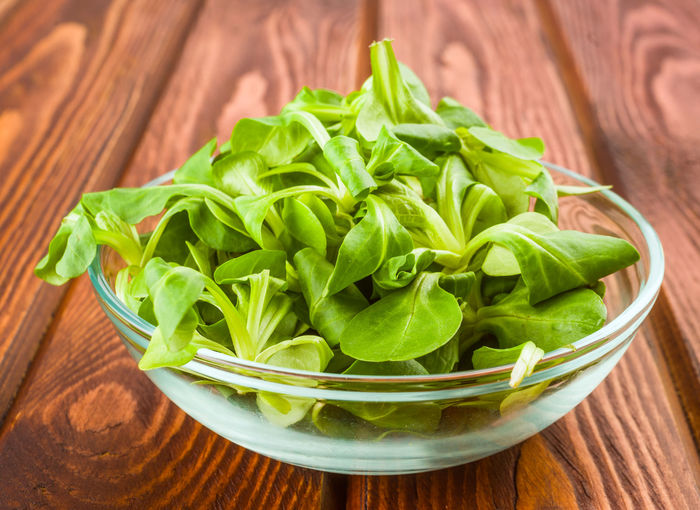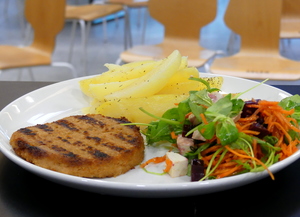Lambs lettuce
Lamb’s lettuce (valerianella oliotora or valerianella locusta), sometimes known as corn salad, is a wild plant from the Valerianaceae family. It’s highly appreciated in any cuisine nowadays.
Lamb’s lettuce grows in a low rosette. They come from Europe and they grow wild in cold parts of Europe, Asia and the Caucasus. Nowadays lamb’s lettuces are grown mainly in Italy, France and Germany.
This plant’s unusual name comes from the lettuce's resemblance to the size and shape of a lamb's tongue. There was a time when this plant was underappreciated, but nowadays it’s highly appreciated for its tenderness, freshness and nutritious properties.
Cultivated lamb’s lettuce has a slighter taste than that grown wild, with slight nutty hints and a very tender texture. It is a great source of beta-carotene, vitamin C and folic acid and it has very few calories, just 14 for every 100 grams.
It is eaten raw, in salads with light dressings so that its freshness and flavour can be tasted, and also in soups and creams that are not cooked at high temperature.
Lamb’s lettuce’s shelf time is short, one or two days in the fridge, that’s why it’s recommended to buy and eat them in a span of one or two days so you can enjoy all their properties.
-
Type of dish
- Beers
- Cocktails
- Breakfasts and brunch
- Burguers
- Juices, milkshakes and beverages
- Shellfish
- Bread and pastries
- Pizzas, patty
- Dessert
- Pasta
- Sándwich
- Pastries
- Finger foods
- Ice creams and sorbets
- Legumes
- Salads
- Eggs
- Patty
- liqueur
- Harvard plate
- Main course
- Meats
- Fish
- Birds
- Vegetables
- Soups and creams
- Rices
- Coffee, chocolate and infusion
- Cheeses
- Appetizers and canapes
- Temperature
- Cuisine type
- Additional culinary preparation
- Conservation technique
- Seasonal recipes
-
- Aromatic herbs
- Beverages
- Big game hunt
- Bread and pastries
- Canned goods and pickles
- Cereals
- Condiments, spices and additives
- Cooked, salted, preserved and cold meats
- Dried fruits and nuts
- Dry pulses
- Edible oils and vinegars
- Eggs and derivatives
- Feathered game hunt
- Fish cuts
- Fishes
- Insects
- Kitchen and bakery tecniques
- Kitchen and bakery utensils
- Meat cuts
- Meats
- Milk, cream and derivatives
- Mushrooms
- Offal
- Pasta, rice, flour and derivatives
- Poultry
- Seafood
- Service techniques
- Service utensils
- Vegetables cuts
- Vegetables, fruits, tubers and seaweed


